
What’s the difference between an arm-chair survivalist and the real deal? The difference between someone who could get by for a few weeks and someone who could thrive indefinitely?
One word – action.
I was lucky enough to meet someone who is the real deal recently. Mark is a long-term survivalist, and he graciously answered about a million questions about his lifestyle. The end result was, I learned a lot, including how little I actually know in comparison to someone who lives an off-grid, non-consumer life every single day. Even better, I have permission to share this information with the rest of you in the form of a new series: Long-Term Survival.
Mark lives in the desert, and he’s off the grid. His well was dug by hand over the course of a month. His shelter is built by hand. There is no indoor plumbing and he cooks most meals outdoors over a fire. He’s a big believer in tools and skills over beans and rice.
Daisy: What does bugging out mean to you?
Mark: My “bug out kit” is tool heavy for food, shelter, and fire. Everything else is a luxury. So I would not pack a lot of the stuff others might be going for. If I was bugging out, I’d plan for it to be for the long haul. I’d want a set of tools that would make life easier and almost guarantee that you would have a roof over your head, food in your belly, and fire to keep warm by. I am going to carry tools over comforts because the comforts can eventually come from using the tools.
Daisy: Is this the kind of kit you’d recommend for anyone who is interested in building the ultimate bug out kit?
Mark: Well, you have to practice with the tool set I am going to talk about and become comfortable with them. Also, remember that your mind is tool number one and the best tool you can exploit.
Daisy: Why is your bug-out plan so different than the basic plan we see outlined on all of the prepping sites?
Mark: If you look around at everyone’s “bug out bag” and “bug out plans,” they all revolve around a 3 day disaster or getting to your “bug out location”. Not many people are set to “bug out” for the long haul. But what if you couldn’t look back? What if bugging out meant 30 years instead of 3 days, or if there was no home to come back to? If it came down to bugging out, I’d want to far far away. I’d be building a semi-permanent shelter and starting a trap line and learning all the hunting trails. Then, when its time to move south for the winter I’d pack my stuff and walk to my warmer spot, and do the same thing. I want to have a life, not always be running around like a squirrel after a nut once things really collapse, like history has told us EVERY other society like ours has done.
Daisy: So if you had to just grab one bag and go, what tools would be in it?
Mark: In my opinion, there are 5 tools you need to have, and some of these have multiple uses: a Swiss Army champion knife for your medical kit , a Leatherman crunch for repairs, a CRKT Folts minimalist hunter neck knife for small game skinning and utility (best neck knife around and it is only 25 bucks. I personally use it and also the tano one as a utility knife both on neck but one will do, the hunter), a Mora “light my fire” camp knife – it’s a utility medium game skinning with build in ferro rod, and a medium size forged axe with at least a 2lb head 2.5-3lb would be best – it’s one step above a hatchet for shelter, fire wood, large game skinning, and protection.
Daisy: Wow, you answered that quickly!
Mark: You should also add for readers that these tools are for your hands only. They mean your survival, so never lend them out to anyone, not even parents, children, brothers, sisters, husbands, or wives. They should all have their own. These are yours and yours alone.
Daisy: Okay, let’s go over these different tools. Tell me about the Swiss Army knife that you recommend. (link to this tool – $99)
Mark: The Swiss army knife is high grade stainless steel. This is important because it can be sterilized and has a very sharp fine edged blade that can basically double as a scalpel. There are several tools in The Champ that can lend themselves to helping in a medical emergency. There is a magnifier to look for ticks and other parasites, as well a pair of decent tweezers for tick or sliver removal. Fine scissors to cut bandaging or other types of cloth and light materials…the list goes on. Trust me when I say you will be happy you have it along in your medical kit if an emergency ever arises.
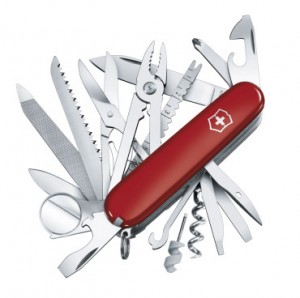
Daisy: And what is the Leatherman Crunch? (links to info on this tool and where to buy this tool $66.63)
Mark: The crunch is a mini “vise-grip” with a groove in its nose to lock down on something like a sewing machine needle, if you need to use it to sew for repairs. It has some screw drivers: a small common blade (flat), a medium common blade, and Philips (cross). As well, there is a rasp, a file, a large screwdriver, and a serrated knife that is graduated in both standard and metric to measure and can cut light wire like copper, aluminum, brass, or bronze. It also has a bit driver, and all of the tools lock into place. It is one of the few tools Leatherman makes that falls under the category of “heavy duty” in their line up.
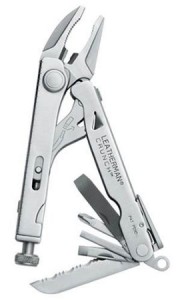
Daisy: What is a neck knife? (link to tool $36.99)
Mark: A neck knife is a small all around utility/skinning knife that is always right there within reach. I prefer a hunters blade. This is the knife you will be doing most of your daily small game skinning and other light camp chores with. Never leave home with out it, as you never know when and where you might need it.
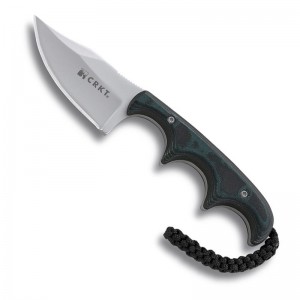
Daisy: Can you tell me more about the “light my fire” knife? (links to less expensive tool $28.01 and higher quality tool $69.99)
Mark: I prefer having a dedicated knife that is married with a ferro rod “fire steel”. That way you have a medium duty knife for skinning, camp utility, carving, and a last ditch resort to make sure you have a fire. Mora makes a very nice and economical bushcraft knife/ferro rod set. You can shop around – several knife makers are now making hunter-bushcraft/fire sets. You want a high carbon steel blade on this knife if you can because the ferro rod will work better. Do not skimp on quality for anything less than a Mora on this item. Mora would be the low end for price, and yet still provide a quality knife that you can rely on.
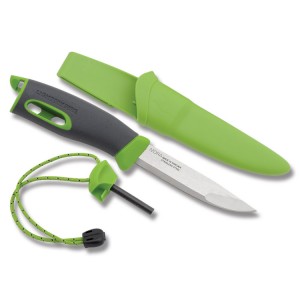
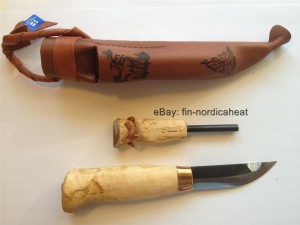
Daisy: And, finally which axe would be best and what can it be used for? (link to information about the tool and link to buy the tool – about $63 USD)
Mark: The Hultafors hunter’s axe is a high quality choice. Hultafors is the oldest axe company in the world. They have been forging axes since 1697 and their axes are much less expensive than the competition’s axes. This is not the absolute highest quality axe, but it is still a good quality, forged axe. I actually have one of these, its smaller brother, and a carpenter axe from this company, and I love them all. The Hultafors hunter’s axe is in the “classic” line and is around 85 bucks, with maybe a tiny bit more for shipping vs. 150+ bucks from the competition on production-forged axes of this size. You can use this tool for building an advanced shelter, for all of your camp amenities such as table, chair, loo, etc. It can also be used for harvesting all the firewood you need, as well as skinning and splitting any large animals you may have hunted, trapped or found as “road kill”. [laughter] Also, it can be very effective as a weapon to protect yourself. I can guarantee that if you practice with an axe and follow through on a heavy swing you will damage anything wild attempting to get you in its jaws.
Daisy: I’m sure it would also deter anything human attempting to cause you harm.
Mark: You do as you wish. I don’t want people thinking I am a crazy human killer. [laughter]

***
These tools are tried and true, and Mark owns them all. At an investment of less than $300, they could easily mean the difference between life and death, or at the very least, comfort and misery. He also recommends the addition of a rasp or file and a short honing strop to keep the tools sharp and tuned up.
Next in the Long-Term Survival Series, Mark will talk about living without water flowing from the taps. He’ll discuss digging a well, conservation measures, sanitation, and how he does some of those things that we all take for granted with our indoor plumbing that most of us can’t imagine life without.
About the contributor:
Mark lives in the desert in the American Southwest. He was raised in a survivalist family, and this has been his lifestyle for as long as he can remember. He has entered a design contest with functional axe that has multiple purposes and is geared towards survival…If you have found his contribution to this website to be helpful, please say thank you by going to Facebook and giving it a “like” – the winner of the contest will see his design produced.



























